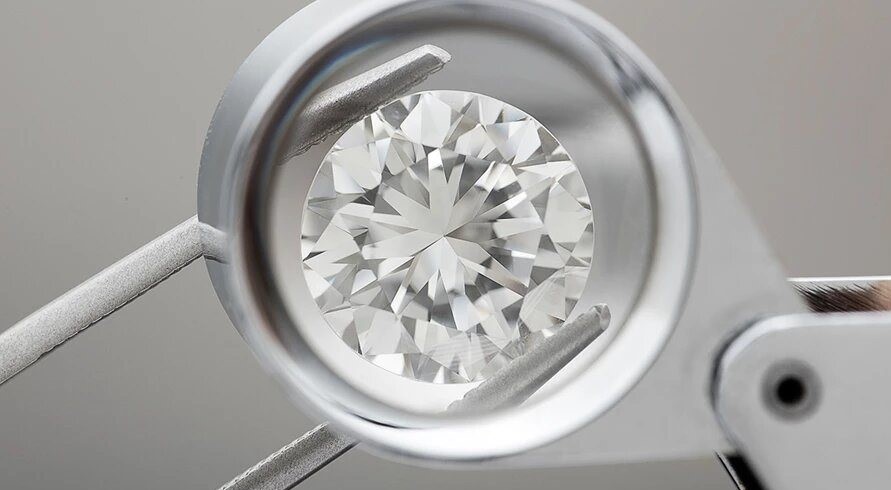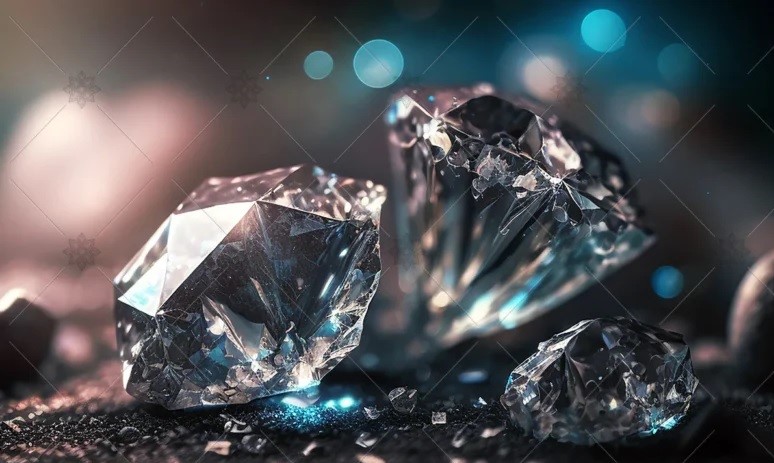
These synthetic stones are far less expensive than real diamonds while possessing the same chemical and visual qualities.
A significant shift is taking place in the bustling city of Surat, where 90% of the world’s diamonds are expertly cut and polished. Smit Patel’s state-of-the-art lab is revolutionizing the $89 billion diamond jewelry market right here in the center of this diamond hotspot. This represents a significant shift in the industry since diamonds are now meticulously created in less than eight weeks rather than over billions of years beneath the surface of the Earth.
Leading this transformation is the rapidly expanding field of lab-grown diamonds, which has experienced significant growth in acceptance and popularity. Although they are far less expensive, these artificial jewels have the same chemical and visual characteristics as real diamonds. Patel, the director of Greenlab Diamonds, demonstrates the similarities between lab-grown and natural diamonds by saying, “It’s the same product, it’s the same chemical, the same optical properties.”
A tiny diamond seed is first placed in a machine that replicates the harsh conditions found deep under the Earth’s mantle. These seeds are transformed into rough diamonds that are ready for cutting and polishing through a meticulous process that uses gasses like methane, heat, and pressure. This new technique offers a new ethical and ecologically friendly option to the market in addition to speeding up production.
Shifts in the Market and Consumer Demand
The traditional diamond industry has seen substantial changes since the introduction of lab-grown diamonds, which has led to a significant increase in the global market share of these stones. India’s exports of lab-grown diamonds have tripled in value between 2019 and 2022, indicating the rising desire for conflict-free and sustainable solutions. In less than a year, the market share of lab-grown diamonds in engagement rings increased from 17 to 36 percent, indicating a significant increase in popularity.
But there have been some difficulties with this rapid ascent. The market for natural diamonds has been adversely affected by declining demand, political instability, and fierce competition from lab-grown alternatives. A unusual voluntary prohibition on the importation of rough diamonds into India resulted from this confluence of circumstances, illustrating how the industry is struggling to adapt to changing consumer demands.


Beyond financial gain, the popularity of lab-grown diamonds is morally and environmentally sound. These jewels provide a greener, more responsible option for consumers because they are produced with renewable energy and don’t contain “conflict diamonds.” Lab-grown diamond producers like Patel are confident they are doing the right steps for the environment, despite disagreements over the amount of energy required in their production.
What People Find Appealing about Lab Diamonds
Those who support them remain optimistic about the future despite the increase in lab-grown diamonds and the frequent fluctuations in prices. It is anticipated that reduced costs would increase demand, making these jewels accessible to all. Even with issues like as businesses declaring bankruptcy and uncertainty surrounding the future, individuals such as Patel are confident that the increasing availability of lab-grown diamonds is inevitable.
What’s Up Next for Diamonds Made in Labs? A major shift is taking place in the bustling markets of Mumbai and the cutting rooms of Surat. Once unpopular, lab-grown diamonds are currently transforming public perceptions of luxury and jewelry value. Lab-grown diamonds are growing in popularity, offering hope for a time when everyone will be able to shine brightly, as consumers become more concerned about the environmental impact of products and where they come from.

































































































































































































































































































































































































































































































































































































































































































































































































